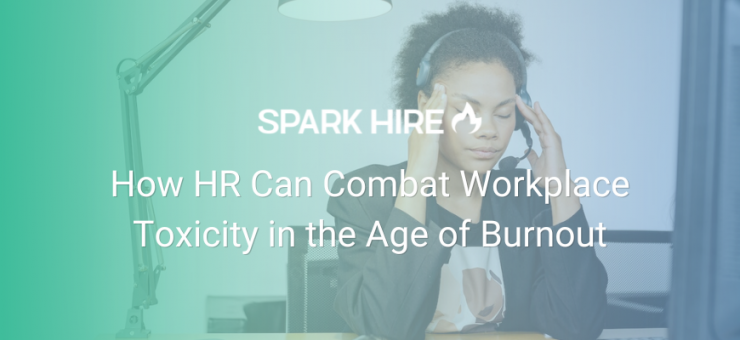Workplace culture plays a key role in the happiness, productivity, and retention of employees. A positive work environment is something many people look for when they’re applying for a long-term job, especially in this age of employee burnout.
Burnout is a specific type of work-related stress, and it’s just about as awful as it sounds. Employees experiencing burnout have a reduced sense of accomplishment, and the negative effects can carry over into their personal lives.
As we enter a post-pandemic society, people are more burnt out than ever from the stress of the last few years. As an HR professional, it’s important to do your part to combat employee burnout in the workplace. You can do that by fostering a positive workplace culture and battling against toxicity.
Not sure how to get started? Let’s cover a few strategies you can put into place to benefit your employees and your overall workplace environment.
Recognize the Signs of Employee Burnout
Unfortunately, not every employer or HR professional is well-versed in the signs of burnout. You could have employees working for you who are really struggling. You might think they’re just not performing to the peak of their abilities, but it could be something deeper going on beneath the surface.
You should always be checking in with employees, both as individuals and collectively, to make sure you’ll notice if any signs of burnout are starting to show. Some of the most common red flags indicating employee burnout include:
- Lack of energy
- Low productivity
- Low motivation
- Difficulty concentrating
If you talk to your employees about how they’re feeling, they might also share symptoms like:
- Stress
- Fatigue
- Sadness
- Insomnia
Unfortunately, job burnout can lead to serious mental and physical health issues, including everything from high blood pressure and diabetes to depression and anxiety. By checking in with employees on a regular basis, you’ll have a better idea of who is struggling, a greater understanding of why, and you’ll be able to start developing helpful strategies to fight back against burnout.
Provide Mental Health Support
The recent “Great Resignation” occurred largely because employees weren’t happy with their work environments. Or, they weren’t getting enough flexibility. Many employers could’ve prevented employees from resigning by paying attention to those things and promoting better environments.
That often starts with providing the wellness support employees want and deserve. You can use the “Great Resignation” as a wake-up call for your business, and start prioritizing mental health in the workplace. We already touched on the fact that burnout can lead to depression, but the stress and fatigue leading up to more serious mental health issues will impact an employee’s performance and overall well-being.
Workplaces that take the time to promote mental health, on the other hand, often see greater staff morale, increased productivity, and an overall sense of trust and safety.
You can do your part to create a mentally healthy workplace by implementing a few simple strategies and using your resources. For starters, don’t be afraid to discuss mental health in the workplace. The more open your employees can be, the less stigmatized the issues become.
Additionally, offer free screening tools for employees, support efforts to get help, and provide in-service training on self-care and mental health management.
Promote a Healthy Work-Life Balance
One of the major causes of employee burnout in the workplace is a lack of flexibility. Employees who feel constant pressure to perform or feel like they can never get everything done in a day without sacrificing their free time are likely to burn out quickly. This also fuels and fosters a toxic workplace environment, because you’re more likely to have tired, unmotivated, and overly-stressed employees.
You can support a better work-life balance for your employees by:
- Offering more flexibility
- Encouraging managers to focus on productivity over time
- Encouraging frequent breaks
- Giving staff more time off
- Tailoring experiences
You might consider taking a page from the book of freelancing, as well. Modeling your business after a freelancing lifestyle can improve flexibility and work-life balance, improve performance and retention, and reduce anxiety among your employees. You might even want to let certain employees work from home, but be aware that burnout can occur anywhere – even remotely.
You might not be able to change the burnout age, as a whole. However, as an HR professional, you can do your part to prevent a toxic workplace, promote mental health, and prioritize the well-being of your employees by fostering a healthy workplace environment.
—
 Indiana Lee is a writer, reader, and jigsaw puzzle enthusiast from the Pacific Northwest. An expert on business operations, leadership, marketing, and lifestyle, you can follow her on Twitter @IndianaLee3
Indiana Lee is a writer, reader, and jigsaw puzzle enthusiast from the Pacific Northwest. An expert on business operations, leadership, marketing, and lifestyle, you can follow her on Twitter @IndianaLee3











